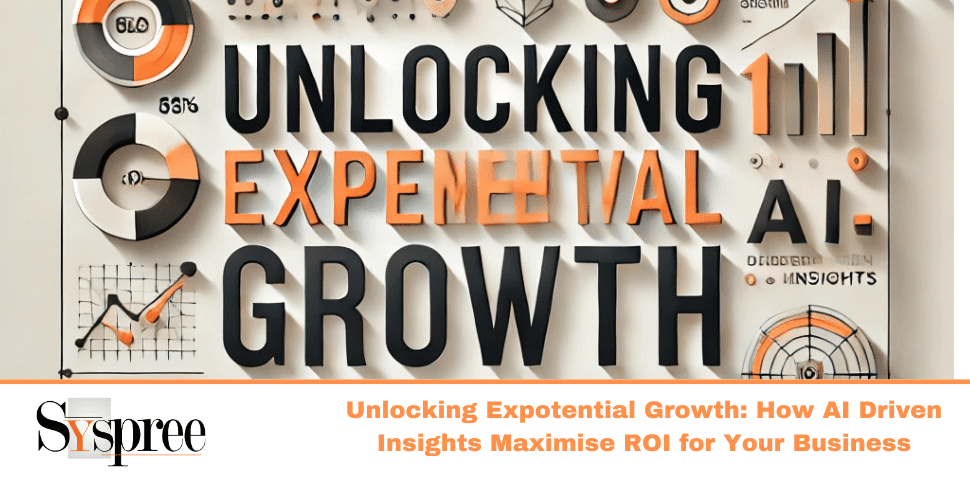Unveiling the Future: Top 5 Cybersecurity Trends to Watch in 2025
15 Min to Propel Business Growth with Advanced Performance Monitoring in 2025 In today’s fast-evolving digital landscape, keeping abreast of Cybersecurity Trends in 2025 is no longer optional—it’s imperative. For business leaders and decision-makers, understanding Cybersecurity Trends in 2025 can mean the difference between safeguarding your assets and leaving them vulnerable to increasingly sophisticated threats. With businesses like yours generating substantial monthly revenues, a strategic approach to Cybersecurity Trends in 2025 can protect not just your data but your reputation and bottom line. Welcome to 2025—here’s what to watch in Cybersecurity Trends in 2025. Cybersecurity Trends in 2025: An Introduction Cybersecurity is undergoing a dramatic transformation. As technology advances, so do the tactics of cyber adversaries. By 2025, the perimeter of network defense as we know it will evolve considerably, prompting businesses to rethink their strategies. Here’s how forward-thinking SMEs and industry leaders are positioning themselves to not just survive but thrive amidst these challenges. The Cybersecurity Challenges that Lie Ahead An often-overlooked aspect by companies generating millions in revenue is the rapidly changing nature of threats. Whether it’s the uptick in ransomware incidents or vulnerabilities exposed by remote work environments, the stakes are higher than ever. Failure to adapt means exposing your enterprise to potentially crippling data breaches and financial loss. Let’s delve deeper into the trends setting the pace for cybersecurity in 2025. Trend 1: Zero Trust Architecture Becomes the Norm Understanding Zero Trust Zero Trust architecture is not a new concept, but by 2025, it will be indispensable. This model operates on the premise of “never trust, always verify.” For businesses, adopting a Zero Trust approach means no implicit trust is granted to any user, whether inside or outside the network, until they have been authenticated and continuously validated. Implementing Zero Trust Imagine the power of ensuring every user and device is authenticated continuously. Many leading companies have already begun integrating Zero Trust principles into their security protocols. By 2025, this model’s efficacy will push it from being a best practice to a standard practice. SySpree, known for its forward-thinking cybersecurity strategies, can guide you through this transition, ensuring robust defenses anchored by Zero Trust principles. Trend 2: AI and Machine Learning to Combat Cyber Threats Why AI Matters Artificial Intelligence (AI) and Machine Learning (ML) are more than buzzwords; they are the arsenal needed to fight future cyber threats. By leveraging AI, businesses can predict, detect, and neutralize threats dynamically and more accurately than traditional methods. Practical Applications For example, automated threat detection systems powered by AI can differentiate between benign and malicious activities in real time. This agility enables companies to not just respond but proactively shield their systems. Integrating these technologies may seem daunting, but the team at SySpree has invested in cutting-edge AI research, ready to deploy solutions aligned to your organization’s unique operational framework. Trend 3: Enhanced Endpoint Security for Remote Work Environments The Evolving Workplace With hybrid work models becoming commonplace, endpoint security is critical. By 2025, securing a dispersed workforce’s endpoints will be more complex yet more essential than ever. This trend calls for robust strategies to secure every device that accesses your network. Endpoint Security Solutions Implementing comprehensive endpoint protection platforms (EPP) that defend against sophisticated attacks will be vital. This includes software that can update, patch vulnerabilities, and enforce strong authentication. SySpree’s solutions ensure that each endpoint is fortified with the latest protective measures, regardless of where your workforce operates. Trend 4: Integration of Cybersecurity with Compliance The Compliance Mandate Navigating the increasingly intricate web of regulations is challenging yet unavoidable. By 2025, cybersecurity will be intrinsically linked with regulatory compliance, making it essential for businesses to ensure their security strategies meet every legislative requirement without fail. Achieving Compliance Regulatory frameworks such as GDPR or CCPA are constantly evolving. It’s crucial to integrate cybersecurity measures that not only protect but also comply. SySpree’s expertise ensures that your systems not just meet but exceed compliance standards, helping you avoid costly fines and maintain business integrity. Trend 5: Human-Centric Cybersecurity Strategies Custom-Tailored Solutions Human error remains a significant cybersecurity risk. As such, a people-focused approach is more critical than ever. By 2025, cybersecurity will prioritize user education and engagement to mitigate risks associated with human error. Role of Training and Awareness Developing a culture of security awareness through ongoing training will be key. Creating streamlined processes that involve employees in cybersecurity protocol evolution not only mitigates risks but also empowers them as your first line of defense. SySpree’s tailored training programs equip your team with necessary skills and proactive strategies to combat everyday threats. Empower Your Business with Proactive Cybersecurity The future beckons with both challenges and opportunities. By adapting to these emerging trends, you can protect your business while capitalizing on new tech advancements. Cybersecurity isn’t just about defense—it’s about securing your competitive edge. With SySpree as your partner, leverage the insights, tools, and strategies necessary to thrive in this landscape. Our holistic approach combines cutting-edge technology with tailored strategies, ensuring you not only meet today’s demands but anticipate tomorrow’s. Conclusion: Prepare for Tomorrow, Today As we look toward 2025, the imperative is clear: harness these trends to safeguard your business’s future. Cybersecurity is a strategic imperative that extends beyond technology; it’s about empowering your business to grow securely and sustainably. Call to Action: Are you ready to fortify your business against the cybersecurity challenges of 2025? Contact SySpree today for a consultation and learn how our innovative solutions can protect and propel your business forward. Other articles that may interest you – Unveiling the Power of Advanced Performance Monitoring Unlocking Design Potential with Effective Wireframing Best Practices for Modern Responsive Design: Keep Users Engaged Why Custom Web Applications Are Essential for Business Growth in 2025 5 Key Benefits of Website Speed Optimization for Businesses Book a Free Consultation







